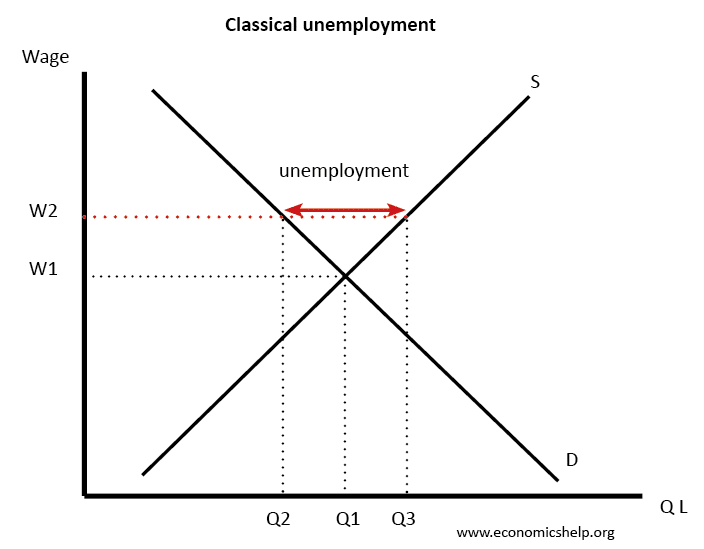Employment and Unemployment
- Created by: ekenny5
- Created on: 09-11-21 15:00
Measures of unemployment include the claimant count and the Labour Force Survey.
Voluntary unemployment is defined as a situation whern workers choose not to work at the current equilibrium wage rate. This could be due to:
- excessively generous welfare benefits
- high rates of income tax
- workers seeking better working conditions.
Voluntary unemployment is likely to occur when the equilibrium wage rate is below the average necessary to encourage individuals to supply labour (supported by classical economists). Keynesian economists advocate the concept of involuntary unemployment which exists because of a lack of aggregate demand. This means people are unable to work because there is insufficient jobs available in the economy (unable to find a job).
Types of Unemployment:
- seasonal - when people are unemployed at particular times of the year when the demand for labour is lower (eg after xmas)
- structural - when the skills of workers do not match with the skills needed for the vacancies in the economy - it is a mismatch of skills
- cyclical - unemployment due to a period of negative economic growth or economic slowdown
Causes of unemployment:
Demand side (deficient):
- high interest rates
- global recession
- negative multiplier
- financial crisis
Supply side:
- frictional
- structural
- geographical immobility
- real wage unemployment
- technological change
Real Wage Unemployment occurs when wages are above the equilibrium level of causing the supply of labour to be greater than demand - more people are willing and able to work than there are jobs available.

Factors determining real wage unemployment:
- trade unions - through collective bargaining, they can negotiate higher wages for its members. If its successful, the number of workers prepared to work increases, but demand for the labour causes…
Comments
No comments have yet been made